Paper-Training Your Puppy
Dogs
When you first get a new puppy, there are several major decisions to be made about its management, including whether to employ a technique known as paper-training.
Paper-training is basically training a puppy to urinate and/or defecate on strategically-place papers in selected areas in the house. A bathroom is a frequently selected room as the floor is usually clad with linoleum or tiles and is easily cleaned should any urine defuse through the papers. The idea, of course, is that the papers will absorb the pup's urine, making cleanup and disposal easy and convenient.
People who decide to go the paper-training route with their puppy might be described as realists or pragmatists. They accept the fact that there will be occasional accidents inside the house and they prefer to direct those accidents onto an easily cleanable substrate (i.e. the newspapers).
There is a school of thought, however, that paper-training may be somewhat confusing for the pup, since the pup learns that eliminating inside the house is okay while you are trying to train it to eliminate outside. People of this persuasion, the idealists, or purists, prefer not to encourage or condone any elimination inside the house on grounds that it will delay the achievement of housebreaking. Instead, they employ a more radical approach of encouraging urination and defecation outside the house while completely circumventing the possibility of elimination within the home.
Technique for Paper-Training
For the realists or pragmatists, who do decide to adopt paper-training for their pup, the following technique can be used.
Select a smallish convenient room within the house for paper-training to begin. The room should have a non-pervious, easily cleanable floor, comprising of linoleum, tiles, or lacquered hardwood. A bathroom or laundry room are good choices.
Lay down newspapers at one end of the room to cover, say, 25-33% of the floor area. The papers should be suitably thick that they will absorb ¼ to ½ cup water without it seeping through to the floor beneath.
At the opposite end of the room, put down a food bowl and water bowl for the puppy and perhaps one or two playthings.
Bring the puppy into the room and stay with it for a period of time. It is best to choose a time when the pup is likely to eliminate (e.g. 2 hours after it last urinated). You can even give it some chicken soup to drink to expedite the process.
Observe the pup's behavior, whether eating, drinking, playing, or exploring. If, at any time, it starts to sniff the ground more actively, to circle, or squat, you know it is about to eliminate. If, at this time, it happens to be on the non-newspapered section of the floor, calmly interrupt it, lift it onto the newspapers and use what will become well-engrained cue words that it will associate with the elimination process. Typical words are: "Hurry up" and "Go potty."
When the pup eliminates on the newspaper, with or without your assistance, praise it extravagantly. If it has an accident at the "wrong" end of the room, do not scold it, simply clean up the mess and continue as before.
Because of the set up in the room, it is much more likely that the pup will eliminate on the newspaper than to go at the other end of the room near its food and water bowl, so that the deck is stacked in your favor. So powerful is the instinct to eliminate away from the feeding area that even if you were to leave a pup alone in the paper-clad room, it would probably immediately gravitate to using the newspapers.
Once the pup is regularly using the newspapers for elimination, the area that the newspapers occupy can be reduced to a more convenient size. It is probably safest to achieve this area reduction gradually.
When a pup knows what newspapers are for, it can be encouraged to urinate on them in other locations, too, should an owner so desire.
When the pup has to be left for a few hours it can be confined in a discreet area along with access to folded newspapers that will serve as its bathroom. This is very convenient for owners but, as mentioned, may delay eventual housebreaking.
During paper-training, and even after it has been achieved, training the pup to eliminate outside should be ongoing. The accomplishment of having the puppy urinate or defecate outside should be so richly rewarded that the pup will literally hold on to a bladder full of urine in the hopes of getting the opportunity to urinate outside. Of course, there's a limit to the amount of time a pup can hold its urine, maybe 4 hours for a 3-month old pup and 5 hours for a 4-month old pup, so owners must remain ever vigilant if unavoidable accidents are to be prevented. You must be especially careful with a paper-trained pup when you put your Sunday newspaper onto the floor while you go to get that second cup of coffee, otherwise you may come back to find there is more in the news than you had ever bargained for.

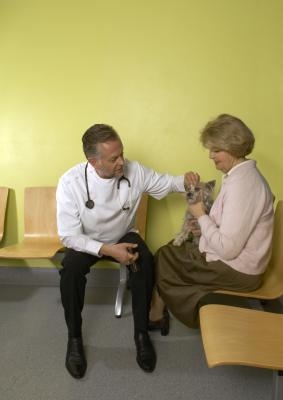 How to Gently Put Down a Dog
How to Gently Put Down a Dog
How to Ge
How to Gently Put Down a Dog
How to Gently Put Down a Dog
How to Ge
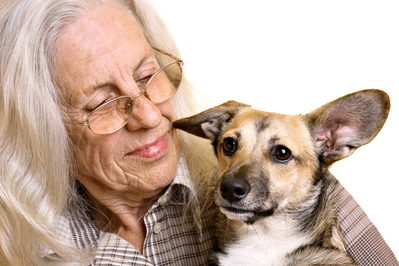 Dealing with Canine Arthritis
If you have an older dog, look for
Dealing with Canine Arthritis
If you have an older dog, look for
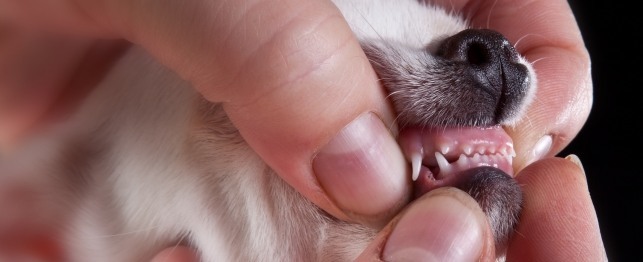 Understanding Teething in Puppies
Understanding Teething in Puppies
Understanding Teething in Puppies
Understanding Teething in Puppies
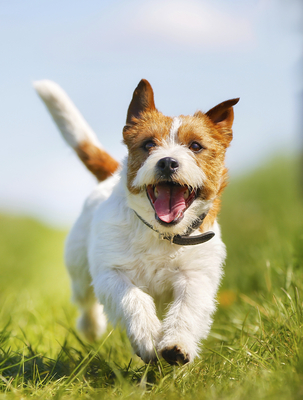 Hotdogs are Treats, Hot Dogs are at Risk
Avoid Letting Your Dog Get Overheat
Hotdogs are Treats, Hot Dogs are at Risk
Avoid Letting Your Dog Get Overheat
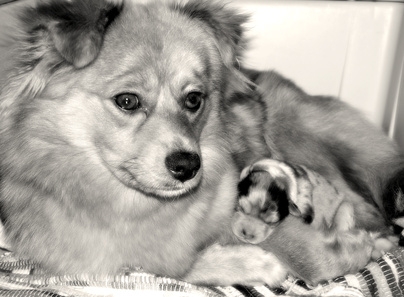 How to Know If a Dog Is Going to Have Puppies
How to Know If a Dog Is Going to Have Puppies
How to Know If a Dog Is Going to Have Puppies
How to Know If a Dog Is Going to Have Puppies